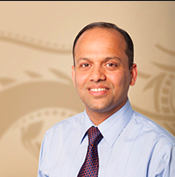Asia is home to about 60% of humanity. With 1.3 billion people, China has demonstrated over the last three decades how an economic miracle can be created by productively employing such masses. It moved millions of people from a rural low productivity, agrarian economy to a more productive industrial and urban economy, thereby radically lifting its economic standards. In 1990, more than 60% of the Chinese population was below the poverty line but by 2015 that proportion was less than 4%. India and the ASEAN (Association of Southeast Asian Nations) economic bloc maintain a similar strength in numbers with populations of over 1.2 billion and 650 million, respectively.
India’s case is particularly unique. Estimates suggest India will add over 115 million people to the global labor force in the next 10 years, and then an additional 100 million over the following decade. By some estimates, this means that India will add more people to the global labor force than the rest of the world combined, excluding Africa. This has significant macroeconomic implications not only for the country, the region and the world, but it should also create opportunities for investors.
A paramount challenge for India is effectively employing these millions and generating strength from numbers rather than merely allowing resources to become constrained by rapid population growth. The need for sustainably high GDP growth to generate new jobs is not a debatable topic. The debates center around whether India is doing enough and whether it is on the right path. India went through liberalization in 1991. And since then, the country has seen significant benefits as GDP growth moved from low single digits (3.5% from 1950-1980) to high single digits. There remains much criticism, however, that government reforms around land, labor and taxation have not been completed. But over the last two years, there have been several government efforts that are worth highlighting.
Bankruptcy Law: More Power to Banks
A structural factor to India’s banking woes has been the lack of a bankruptcy code, which distorts the system. “If a loan goes bad in India then the promoter (owner of the business) tells the bankers that he’ll see them in court and will keep seeing them in court for the next decade,” noted Indian central bank Governor Raghuram Rajan. This is aptly summarized given that politically well-connected promoters historically have not lost ownership of the asset even when loans have gone bad. Recovery takes much longer (more than four years versus less than two years in the U.S.) and recovery rates are dismal (25% versus 80% in the U.S.).
Recently passed insolvency and bankruptcy legislation, however, could critically revamp the current system by superseding existing laws, reversing the balance-of-power in favor of banks (i.e. promoters run the risk of losing their assets), and providing transparent and shorter time-bound resolution guidelines. The new law should remove willful defaulters from the system and prevent nonperforming loans (NPLs) from significantly jamming the banking system. Improving the efficiency of capital utilization is important in supporting entrepreneurs, and thereby helping job creation.
Inclusion for “Unplugged India”
When investors see India’s major urban areas, they see a lot of people but that does not describe the real story behind Indian demographics. Many in India still live in villages, rely on agriculture as their primary means of livelihood (about 65% of the population) and feel largely unconnected with the urban ecosystem. India cannot move forward without including this significant majority, or in other words, if included, the country should be able to produce tremendous national growth.
Much progress has been made over the last two decades in connecting “unplugged India” by improving and adding to its roadways and electricity grids. “All weather” roads have moved from fewer than 50,000 kilometers to over 450,000 kilometers; households with electricity have jumped from about 44% to more than 70%. These simple projects have provided a significant productivity boost to SMEs in India’s smaller towns.
In 2014, Prime Minister Narendra Modi launched a plan for comprehensive financial inclusion for all Indian households. This plan has added more than 175 million banking accounts to the existing 400 million over just two years. In India, consumer companies have been known to do well selling products in individual-sized “sachets” versus typical product sizes for such things as toothpaste or shampoo. In this way, this “sachetization” of the banking system over time will help broader access and increase participation in the financial system, leading to more efficient savings, credit availability for business, increase in investments, and hence, job creation.
Governance: a Prerequisite to Development
India ranks very poorly in terms of ease of doing business (130 out of 189 countries). Hence, the current ecosystem seems inadequate for the creation of enough new jobs to employ the millions expected to join the labor force. The numerous reasons for this poor ranking include layers of bureaucracy and corruption. In my view, improvements in governance are a precursor to improvements in physical infrastructure.
In May 2015, the government also passed the Black Money Act, which made ownership of illegal money a criminal offense. Some say it is an overly aggressive remedy, but necessary medication. The government also implemented a biometric check-in and check-out system for their officials, notorious for being missing-in-action while still being employed. Other improvements include the relaxation of certain rules for SMEs in order to promote a “start-up culture.”
Glass Half Full
Central bank Governor Raghuram Rajan’s announcement that he will not seek an extension to his term has created some anxiety. While some angst may be justified, I believe there is evidence that progress is in motion at various levels to improve the economic landscape. It should also be noted that the average length of tenure for the Reserve Bank of India (RBI) governor position has generally been shorter than that of Western countries. Already during Rajan’s term, he adopted an inflation-targeting framework, worked in conjunction with the Ministry of Finance to help resolve nonperforming assets in PBSs and set up a new Monetary Policy Committee as part of an institutional framework. These changes will become part of his legacy. The RBI has long been hailed as an institute of high repute in India, and should remain so even after his term.
Stepping back from the nuances of individual events, overall, I am impressed at the amount of activity and clear intentions by key officials in resolving the myriad of challenges at hand. Don’t get me wrong, there is still a long way for policy makers to go but some credit is due to them. India has a high cost of capital, hence, freeing up capital from dead physical assets, improving the allocation of that capital by an improved banking system and providing a higher governance environment for entrepreneurial talent in SMEs, will go a long way in delivering the strength of demographics. I hope that policy makers continue their good work and continue to take on the challenge of tough reforms to satisfy the need to create more jobs. Entrepreneurial businesses out of this fertile landscape would be good investment candidates for us.
At Matthews Asia, our investments are not based on macroeconomic projections or policy changes. That said, we still do try to understand the implications of the actions of key policymakers for our economies and businesses in the region. For us, macroeconomic understanding is not about predicting GDP, interest rates, and/or currency changes, but more about socioeconomic developments related to the social fabric of Asian societies. I look at these broader developments through that lens while seeking quality businesses and management teams.
Column by Mathews Asia written by Rahul Gupta, Senior Research Analyst and Portfolio Manager at Matthews Asia



